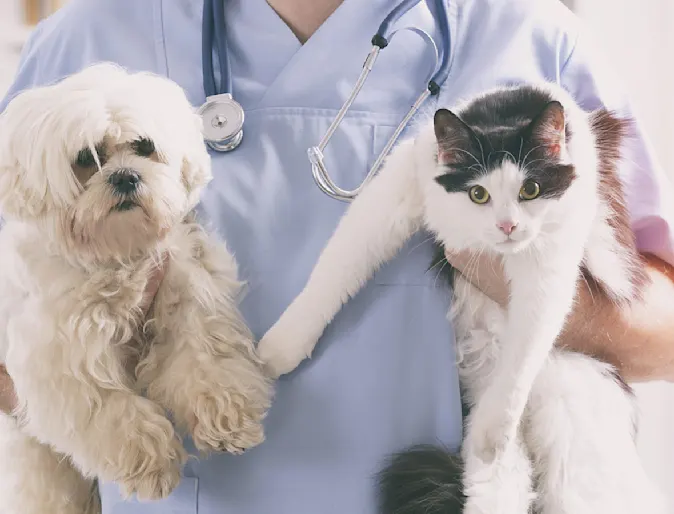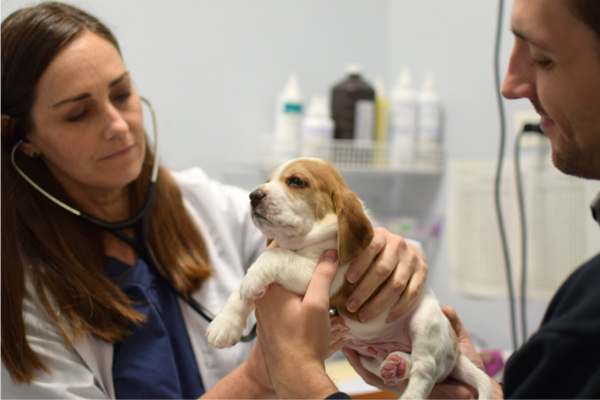Everything About Veterinarian Surgical Procedure: Comprehending the Relevance of Specialist Look After Your Pets
Veterinary surgical procedure is a vital element of pet healthcare. It includes different procedures, from routine optional surgeries to immediate treatments. Understanding the complexities of these surgical treatments can aid family pet owners make notified decisions. The prep work, implementation, and healing phases are vital for guaranteeing the well-being of animals. With correct expertise, owners can browse the complexities of veterinary care. What aspects should be considered prior to a family pet undertakes surgical procedure?
Types of Vet Surgeries
When a pet calls for medical treatment, recognizing the numerous kinds of veterinarian surgeries can assist animal proprietors make notified choices. Veterinary surgeries can be extensively categorized right into three major kinds: elective, immediate, and emergency surgical procedures. Optional surgical treatments, such as spaying or neutering, are planned treatments that are not instantly lethal. Immediate surgical treatments, like those for international body elimination, need to be done quickly but are not life-threatening in the moment. Emergency surgical procedures, such as those dealing with severe injury or inner bleeding, are essential and need prompt attention.Additionally, surgical treatments can differ in complexity, ranging from minimally invasive laparoscopic treatments to a lot more considerable open surgical treatments. Each type of surgery lugs its very own risks and healing procedures. Recognizing these classifications permits animal proprietors to engage in meaningful discussions with vets, resulting in far better outcomes for their cherished pets.
Preparing for Your Pet dog's Surgery
Planning for an animal's surgical procedure involves a comprehensive checklist to assure all fundamentals are covered. Effective interaction with the vet is important for comprehending the procedure and any type of essential pre-operative steps - canine tplo surgery. In addition, having clear post-operative treatment instructions will aid owners supply the most effective assistance for their recuperating pet dogs
Pre-Surgery Checklist Basics
Guaranteeing a smooth surgical experience for an animal calls for careful preparation and attention to detail. A pre-surgery checklist is essential for animal owners to comply with. Confirming the arranged surgical procedure day and time is crucial. Proprietors must additionally verify that their pet has not eaten according to the vet's instructions, typically for 8-12 hours prior to surgical procedure. Collecting necessary clinical records, including vaccination history, is essential for the vet's testimonial. It is likewise recommended to prepare a comfy area in the house for the animal's recovery after surgical treatment. Owners need to have a strategy for transport to and from the veterinary clinic, making certain that the pet is safe and comfy throughout the journey. Following these actions can greatly improve the surgical experience.
Interacting With Your Vet

Effective interaction with the veterinarian is essential for a successful surgical experience for pets. Owners should be prepared to review their animal's case history, consisting of any pre-existing problems, drugs, and allergic reactions. This details helps the veterinarian evaluate risks and customize the medical plan accordingly. In addition, pet dog proprietors ought to ask inquiries regarding the treatment, anesthesia, and anticipated end results to ensure they completely recognize the procedure. Clarifying any questions can alleviate stress and anxiety for both the pet dog and the proprietor. It is likewise crucial to connect any kind of behavior modifications or concerns observed in the family pet leading up to the surgical procedure. Eventually, clear discussion fosters trust and collaboration, making sure that pet dogs get the very best possible treatment during their medical trip.
Post-Operative Treatment Instructions
After going over the procedure with the veterinarian, family pet owners must concentrate on post-operative treatment guidelines to help with a smooth recuperation for their family pets. These directions usually include checking the surgical site for signs of infection, such as inflammation or discharge. Pets might need to be maintained tranquil and confined to stop excessive movement that might interrupt healing. Pain monitoring is important, so owners ought to follow the veterinarian's assistance on carrying out medications. Furthermore, dietary constraints might be recommended to prevent gastrointestinal trouble. Regular follow-up appointments are essential to guarantee correct recovery and attend to any kind of problems. By adhering to these post-operative care directions, family pet owners can greatly add to their family pet's recovery and total health.
The Surgery Explained
The surgical process for animals includes important steps that ensure their security and recuperation. Pre-surgery prep work are important for lessening risks, while post-operative treatment standards play a crucial role in promoting healing. Understanding these elements assists pet dog proprietors navigate the surgical experience a lot more efficiently.
Pre-Surgery Preparations
Before a family pet undertakes surgery, numerous essential prep work have to happen to ensure a risk-free and successful procedure. Initially, a thorough veterinary exam is important to evaluate the family pet's total health and wellness and identify any kind of prospective risks. This may consist of blood tests, imaging, or various other diagnostics. The vet will certainly likewise talk about anesthetic choices customized to the pet's details demands. Additionally, animal owners are normally advised to hold back food and water for a specified time prior to surgical treatment to lessen the threat of problems throughout anesthesia. It is necessary for proprietors to offer a full case history, consisting of any kind of medications or allergies, guaranteeing the medical group has all required information. Proper interaction and adherence to pre-surgery standards can greatly boost the outcome of the treatment.
Post-Operative Treatment Guidelines
Proper post-operative care is crucial for making certain a pet dog's recuperation following surgery. After the treatment, pets should be checked carefully for any type of indicators of issues, such as too much bleeding, swelling, or uncommon behavior. It is necessary to adhere to the vet's guidelines relating to medications, including pain reducers and anti-biotics. Animals need to be kept in a silent, comfortable atmosphere to lower anxiety and advertise recovery. Limiting activity is essential; short, leashed walks might be required, click for source but jumping or running must be stayed clear of. Routine follow-up consultations need to be scheduled to evaluate the recovery procedure. Additionally, the medical site needs to be kept clean and dry, with any type of indications of infection reported to a vet immediately. Following these standards improves recovery outcomes.
Anesthesia and Discomfort Monitoring
Reliable anesthesia and pain administration are vital parts of vet surgery, ensuring that pet dogs stay comfortable and secure throughout the treatment. Veterinarians analyze each animal's private requirements, taking into account variables such as age, weight, health and wellness status, and the kind of surgical treatment being performed.Anesthesia methods generally consist of a mix of pre-anesthetic drugs, induction representatives, and inhalant anesthetics, permitting exact control over the animal's degree of awareness. Tracking during surgery is important; veterinarians continuously observe crucial indicators to resolve any type of potential complications promptly.Pain administration approaches might include opioids, non-steroidal anti-inflammatory medications (NSAIDs), and anesthetics, tailored to the family pet's details circumstance. This diverse technique assists minimize pain and advertises a smoother surgical experience. By prioritizing effective anesthetic and pain administration, veterinary professionals enhance the general welfare of pets going through operations, ensuring they receive the highest standard of care.
Post-Operative Treatment and Healing
Complying with surgical treatment, the emphasis moves to post-operative treatment and recuperation, which is important for guaranteeing a family pet's risk-free go back to normal tasks. Throughout this duration, pet dogs require a peaceful, comfy setting to help recovery. Proprietors need to carefully check their pet dogs for any type of signs of pain or unusual behavior.Veterinary standards typically consist of specific guidelines related to medicine management, wound treatment, and dietary modifications. It is vital to stick to these recommendations to minimize problems and promote healing. Pet dogs may need to be limited from vigorous activities, such as running or leaping, throughout their recovery period (tplo surgery).Regular follow-up consultations with the veterinarian permit for monitoring of the pet dog's development and timely changes to the care strategy. Giving psychological assistance and companionship can also improve a pet dog's recuperation experience, aiding to alleviate stress and anxiety and anxiousness. In general, persistent post-operative treatment plays a substantial duty in achieving a successful recovery
Acknowledging Issues After Surgical Procedure
How can pet proprietors identify complications after surgical procedure? Recognition of certain signs is essential for ensuring the health of family pets throughout recovery. Common indications consist of extreme swelling, soreness, or discharge at the surgical website, which might represent infection. In addition, consistent discomfort, shown by whimpering or reluctance to move, should trigger instant attention. Adjustments in cravings or water consumption can likewise show issues; a decrease in these behaviors may signal pain or distress.Moreover, family pet owners ought to monitor their pets for any type of unusual habits, such as sleepiness or trouble breathing, as these can be signs of major issues. Throwing up or looseness of the bowels adhering to surgery may call for urgent vet assessment. Acknowledging these problems early can greatly impact a pet dog's healing procedure, emphasizing the significance of watchfulness and punctual interaction with a veterinarian for any type of like it worrying signs.
The Function of Veterinary Specialists in Surgical Treatment
Veterinary professionals play a vital role in making sure the security and success of operations for pets, especially following surgical treatment when keeping an eye on and treatment are vital. These experts consist of vets, veterinary service technicians, and support staff, every one of whom contribute specialized abilities to the medical process.Before surgical procedure, veterinarians perform complete image source evaluations to analyze the animal's health and wellness, making certain that any type of underlying problems are handled. During the treatment, the surgical team gives anesthesia, keeps sterile atmospheres, and keeps an eye on vital indications, very important for reducing risks.Post-operative treatment is similarly substantial; vet experts observe for difficulties, take care of pain, and guide owners on healing practices. Their expertise allows them to acknowledge very early signs of distress or infection, ensuring timely treatment. Eventually, the collective initiatives of veterinary experts in medical care foster a secure environment, advertising the health of family pets throughout the medical trip.

Often Asked Inquiries
Exactly how Do I Choose the Right Vet Cosmetic Surgeon for My Pet?
Choosing the ideal veterinary specialist includes investigating qualifications, checking out reviews, and examining the facility's setting. It is vital to assess the doctor's experience with specific procedures and their interaction style when making a decision.
What Are Typical Misconceptions Concerning Vet Surgeries?
Typical false impressions about vet surgical procedures consist of ideas that they are always risky, unnecessary, or only for emergencies. Many pet dog owners take too lightly the advantages of precautionary procedures and the skill associated with vet medical treatment.
Just How Much Will My Pet's Surgery Expense?
The cost of a pet dog's surgical procedure can vary significantly based on variables such as the kind of treatment, the vet's experience, and geographical location (canine tplo surgery). Generally, costs range from a couple of hundred to a number of thousand bucks

Can My Pet Dog Eat Prior To Surgery?
Before surgery, it is usually suggested that pet dogs avoid eating for a details period. This fasting helps lower the threat of difficulties during anesthesia. Proprietors need to consult their veterinarian for specific instructions tailored to their animal's needs.
Suppose My Family Pet Has Pre-Existing Health And Wellness Conditions?
When a family pet has pre-existing health and wellness problems, it's crucial for the veterinarian to analyze these elements prior to surgery. This analysis warranties ideal precautions are taken, reducing dangers and maximizing the pet's total security during the procedure.